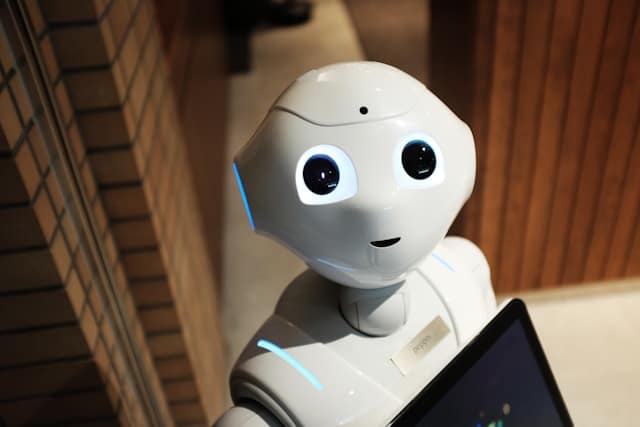The dawn of the 21st century has brought with it a myriad of technological advancements, some of which have the potential to reshape our understanding of life itself. One sphere of technology that has particularly gained traction in recent years is genetic engineering. As you delve into the realm of species conservation, an emerging area of interest is the use of cloning technology to preserve endangered and extinct species. Scholars and scientists alike are harnessing the power of genetic engineering to clone animals, with the ultimate goal of rescuing them from the brink of extinction.
The Science of Cloning: An Overview
Before we explore the potential of leveraging cloning for species conservation, it’s essential to understand the science behind it. Cloning is essentially a method of creating a genetically identical copy or a clone of an organism. The most common type of cloning you might be familiar with is reproductive cloning, where an animal is reproduced from the nuclear DNA of a single parent.
A lire aussi : What’s the Role of AI in Improving Diagnostic Imaging Techniques in Medicine?
In the process of reproductive cloning, scientists remove the nucleus from an egg cell and replace it with the nucleus from a cell of the animal to be cloned. The egg is then stimulated to divide and grow, eventually developing into an embryo. This embryo is transferred into a surrogate mother, who carries it to term.
The dolly the sheep, the first mammal to be cloned from an adult cell, is perhaps the most famous example of this process. But what if this technology could be used for a purpose far greater than creating identical copies of existing animals? What if it could be used to bring back species that have already been lost – like the mammoth – or to prevent species from becoming extinct in the first place?
A lire aussi : How Is Augmented Reality Enhancing Training and Safety in High-Risk Industries?
The Potential of Cloning for Species Conservation
As the world continues to grapple with the accelerated loss of biodiversity, conservation efforts must evolve and adapt. The use of cloning technology in species conservation is one such adaptation. With the ability to create genetically identical copies of animals, cloning offers a unique opportunity to increase the population of endangered species or even resurrect extinct ones.
Consider the mammoth, a species extinct for thousands of years. Scientists have been able to extract DNA from preserved mammoth remains and sequence its genome. If a viable cell were found, it could theoretically be used to clone a mammoth. Though the technology is not yet advanced enough to make this a reality, it paints a picture of the potential of cloning for species conservation.
This technology is not just for the mammoth or species long lost. Cloning could also be used for species that are currently endangered. By producing genetically identical animals, scientists can increase the population and genetic diversity of these species, enhancing their chances of survival.
Challenges to Cloning Endangered and Extinct Species
While the idea of using cloning to aid in species conservation sounds promising, it is not without its challenges. One major concern is the availability of viable genetic material. For extinct species, it can be extremely difficult to find well-preserved genetic material suitable for cloning. In the case of the mammoth, for instance, only a tiny fraction of cells discovered have been viable for cloning.
Even when viable cells are available, there is no guarantee that the cloned animal will survive or be healthy. Cloning processes often result in high rates of failure, with many embryos failing to develop or being born with severe abnormalities.
Another critical challenge is the lack of natural habitats for cloned animals. Habitat loss is a major cause of wildlife extinction. Therefore, without appropriate habitats, cloned animals may not survive long after their reintroduction to the wild.
Ethical Considerations in Cloning for Conservation
As with any groundbreaking technology, cloning for conservation also raises significant ethical considerations. Some argue that the resources invested in cloning could be better spent on protecting natural habitats and implementing traditional conservation methods.
Others express concern about the welfare of cloned animals, given the high failure rate and potential for abnormalities. Furthermore, there is the question of whether bringing extinct species back to life is necessarily a good thing. Some extinct species, like the mammoth, disappeared in a different ecological context. Their reintroduction could disrupt current ecosystems or potentially introduce diseases.
Conclusion
While the concept of using cloning to preserve endangered species holds promise, it is clear that there are significant challenges and ethical considerations to overcome. It is a complex issue that requires careful research, planning, and discussion among scholars, scientists, and conservationists. However, despite these challenges, the potential benefits of cloning technology in the preservation of endangered and extinct species cannot be ignored.
Even amidst the uncertainty and debate, one thing is clear: the marriage of technology and conservation presents a compelling avenue for preserving our planet’s precious biodiversity. As we move further into the 21st century, the role of cloning in species conservation is a topic that will undoubtedly continue to stimulate discussion and scientific exploration. Whether cloning will become a key tool in our fight against extinction remains to be seen, but the possibilities it presents are undoubtedly intriguing and worth exploring.
The Role of San Diego Zoo in Cloning Conservation
San Diego Zoo is one of the institutions pioneering the use of cloning technology for conservation purposes. The zoo has a program known as the Frozen Zoo, which is essentially a repository of frozen tissues, sperm, eggs, and embryos from a variety of species, including many that are endangered.
This genetic material is preserved in liquid nitrogen, ensuring that it remains viable for many years. The Frozen Zoo’s collection is remarkably diverse, boasting more than 10,000 samples from over 1,000 species and subspecies. This wealth of genetic material makes the Frozen Zoo a treasure trove for scientists interested in using cloning for conservation.
In 2020, scientists at the San Diego Zoo made a significant breakthrough in cloning technology when they managed to clone a black-footed ferret, a species that had been declared extinct in the wild. This was made possible by using the preserved cells of a black-footed ferret that had died over 30 years earlier.
The successful cloning of the black-footed ferret was a historic achievement. It demonstrated, for the first time, that cloning could be used to bring back an extinct species, thereby offering a glimmer of hope for other extinct and endangered species around the world.
Revive & Restore: A Pioneer in Species Cloning
Revive & Restore, a California-based non-profit organization, is another key player in the field of species conservation through cloning. They have been working on a project to bring back the woolly mammoth, an extinct species, using advanced genetic engineering techniques.
Their plan, often referred to as “de-extinction,” involves extracting DNA from preserved mammoth remains and then using cloning technology to bring the species back to life. The project has attracted global attention and has been featured in many scientific publications, including Google Scholar and University Press.
While the woolly mammoth project is still a work in progress, it has sparked an important conversation about the possibilities of using cloning technology to preserve endangered and extinct species. It has also raised important questions about the potential ecological impact of reintroducing extinct species into the modern world.
Conclusion
The union of technology and conservation opens up a fascinating realm of possibilities for preserving the world’s biodiversity. As technologies like cloning continue to advance, it seems increasingly plausible that we might be able to use them to save endangered species from extinction or even to bring back extinct species.
However, it’s critical to recognize that cloning is not a magic bullet for conservation. The challenges – both scientific and ethical – are substantial. From the difficulty of finding viable genetic material to the potential ecological impact of reintroducing extinct species, there’s a lot that we need to consider carefully.
Different stakeholders, including scientists, scholars, conservationists, and the public, need to engage in thoughtful discussion about these challenges. We also need to ensure that we are investing enough resources in more traditional conservation strategies, such as habitat protection and the preservation of genetic diversity.
Despite these challenges, it’s clear that cloning technology has a promising role to play in species conservation. With continued research and careful planning, cloning could become an invaluable tool in our fight against extinction.
As we look ahead, institutions like the San Diego Zoo and organizations like Revive & Restore offer inspiring examples of what can be accomplished when we harness the power of technology for conservation. The future of species conservation is likely to be a combination of traditional strategies and innovative technologies, and it’s an exciting time to be part of this important work.






